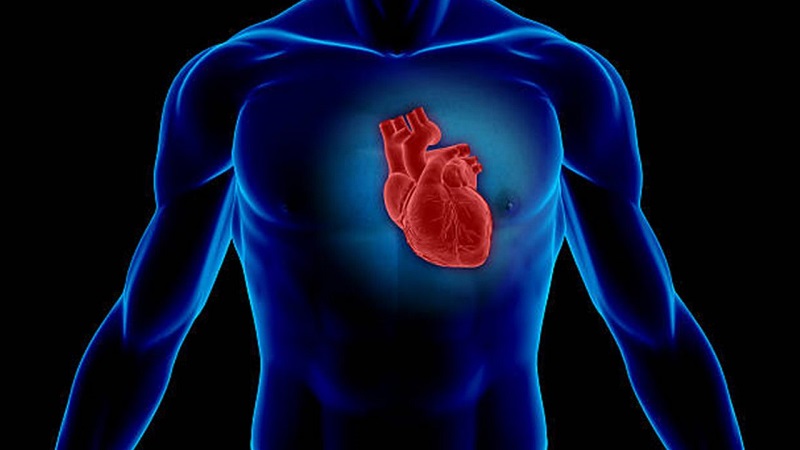The term cardiomegaly indicates enlargement of the heart, evident if the patient is undergoing medical imaging (e.g. X-rays), which can occur as a result.
- A primary pathology,
- A momentary condition (such as pregnancy or periods of high stress),
- A congenital condition.
The heart is made up of three different superimposed layers: a muscular membrane (the myocardium), lined in turn by a serous membrane (the pericardium) which acts as insulation and protection from the outside, and by a tissue located inside the myocardium itself. (the endocardium).
This structure gives shape to four cavities:
- The right atrium and left atrium deal with receiving blood from other areas of the body,
- The right ventricle and left ventricle allow blood to be pumped to the other districts.
The increased heart size can affect the heart as a whole or, selectively, one or more atria and ventricles.
The condition of cardiomegaly does not necessarily represent a real danger to the patient’s life, especially in the early stages of the condition, however, if it is not diagnosed and treated correctly and evolving to a permanent condition it can be the door to the development of heart failure.
The pathology can be diagnosed through imaging techniques, which must be followed by specific tests aimed at identifying the primary cause of cardiomegaly, highlighting or excluding the presence of other responsible diseases.
The same therapy is aimed primarily at treating the cause of cardiomegaly and, at the same time, at changing the lifestyle, with the adoption of healthy habits in terms of food and physical activity.
In some particularly severe cases, surgical treatment and possibly heart transplantation are used.
CAUSES
- Enlargement of the heart may be due to
- Dilation of the heart cavities (atria and ventricles)
- Myocardial hypertrophy is the thickening of the heart muscle at the ventricular level
- Fluid effusions (serofibrinous, serum, or blood) within the pericardium.
The condition maybe
- Congenital (present from birth)
- Idiopathic (with no apparent cause)
- Resulting from other overlying conditions:
- Momentary and / or (para) physiological conditions:
- Physical activity (athlete’s heart)
- Pregnancy
- Stress
- Consumption/abuse of drugs, alcohol, organic solvents
- Use of cardiotoxic drugs (doxorubicin and trastuzumab)
- High pressure
- Cardiomyopathy
- Arrhythmias
- Kidney failure
- Heart valve disorders and defects, for example, caused by
- Rheumatic fever
- Infective endocarditis
- Connective tissue disorders
- Heart defects
- Pomona hypertension
- Myocardial infarction
- Pericardial effusion (accumulation of fluid in the pericardium)
- Anemia ( red blood cell deficiency )
- Hypothyroidism and hyperthyroidism
- Infectious causes ( Chagas disease )
- Hemochromatosis (excess iron in the body)
- Infiltrative disorders (e.g. amyloidosis and sarcoidosis ).
Coronary heart disease conditions and valve defects can represent a major risk factor, as can a family history of cardiomegaly.
SYMPTOMS
Cardiomegaly can present asymptomatically, especially in the early stages, but still, compromise the functionality of the heart if it is not diagnosed and treated before worsening.
Possible symptoms appear when organ function begins to be impaired and include:
- Arrhythmias (changes in the heartbeat) for example in the form of
- Bradycardia (decreased heart rate )
- Palpitations
- Shortness of breath and wheezing
- Leg edema ( swelling )
- Fatigue
- Weight gain
COMPLICATIONS
The characteristic complication is the progressive development of heart failure, an irreversible and life-threatening condition that makes the heart unable to pump enough blood around the body.
Other complications that cardiomegaly can cause include:
- Formation of blood clots that obstruct blood flow, causing serious conditions such as:
- Heart attacks
- Stroke
- Pulmonary embolism
- Valvulopathies (heart valve disorders), leading to the possibility of heart murmurs
- Cardiac arrest and subsequent death of the patient
DIAGNOSIS
In the light of the possible serious consequences, the importance of early diagnosis is clear; despite the possibility of this condition occurring in asymptomatic mode, it is good to immediately report to the doctor non-specific disorders, often erroneously associated with aging or classified as temporary and a consequence of poor physical shape, such as chest pain, feeling of fatigue, shortness of breath.
The referring doctor is the cardiologist; the diagnosis is made on the basis of the patient’s history, the symptoms reported, and identifying all possible risk factors such as primary pathologies, risk behaviors, pregnancy, and familiarity with the condition.
The subsequent instrumental diagnosis, on the other hand, makes use of:
- IMAGING TESTS TO HIGHLIGHT THE SHAPE AND SIZE OF THE HEART, SUCH AS:
- Chest x-ray
- Tc
- Magnetic resonance
- Electrocardiogram to detect the presence of arrhythmias
- Echocolordoppler to identify the morphological defects of the four heart chambers and functional defects
- Blood tests
- Cardiac biopsy performed by inserting a catheter
- Stress test, which is the evaluation of the patient’s reaction (blood pressure and breathing) during physical activity
TREATMENT
The treatment of cardiomegaly is primarily based on the recognition and treatment of the causes that triggered it; if the causes were risky behaviors, such as the use of alcohol and drugs, or the use of specific drugs, it is advisable to stop taking them. Similarly, if the cause is to be found in certain temporary living conditions, such as pregnancy or periods of high stress, it is good to keep the situation constantly monitored.
The enlargement of the heart that occurs in athletes (athlete’s heart) does not need treatment, as it is a natural consequence of physical activity and therefore completely harmless.
Physical activity is one of the essential points on which the modification of the lifestyle aimed at containing and sometimes preventing the worsening of the condition is based, together with:
- Abolition of smoking
- Adopt a healthy diet rich in fruit and vegetables
- Limit your consumption of salt
- Limit or avoid the consumption of alcohol (whose effects on the heart are not always positive as we tend to believe too easily).
The use of specific drugs has been shown to be useful in the treatment of an enlarged heart:
- Diuretics, favoring the elimination of sodium (in cases of hypertension);
- Angiotensin-converting enzyme (ace) inhibitors or beta-blockers to control blood pressure and promote the pumping ability of the heart
- Angiotensin receptor blockers (arbs);
- Anticoagulants for the prevention of acute events such as heart attack and stroke;
- Anti-arrhythmics for cardiac arrhythmias resulting from the condition
In some patients, when drug therapy is not sufficient and for this, the progressive worsening of the patient’s condition is observed, it may be necessary to resort to surgical interventions such as:
- Placement of a pacemaker or implantable cardioverter-defibrillator (ICD) to control heart rhythm,
- Surgical replacement of a malfunctioning valve with a mechanical or biological one,
- A coronary bypass in cases of coronary artery obstruction,
- A ventricular assist device (VAD) used in cases of severe heart failure
In extreme cases, in which the heart has suffered a serious decompensation and the pharmacological treatments have not been able to contain the risks and complications, it may be necessary to resort to heart transplantation with compatible subjects. The surgery is very complex and can involve a rejection of the transplanted organ.





